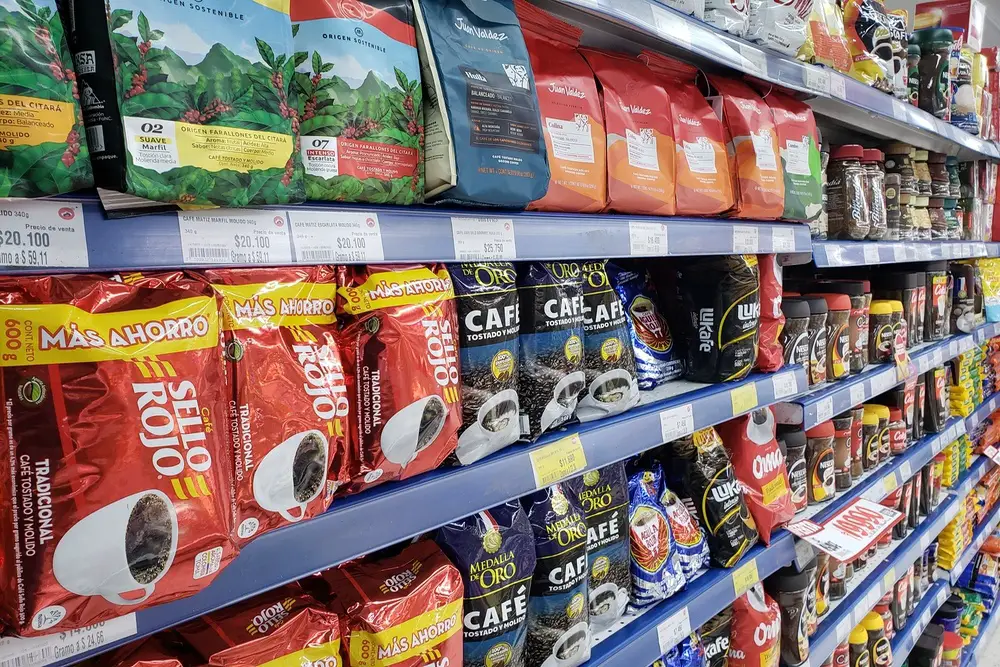Plastic has long been considered a safe choice for container use due to its guaranteed durability. Today, however, he is considered a threat to life in the world. You could say it’s like a slow poison.
This hypothesis is supported by the increasing tendency to suffer from diseases such as cancer or thyroid disorders. Some studies today point to a link between these health complications and the increasing use of plastic over the last few decades.
Despite this knowledge, plastic in the food and beverage industry is often used in a disposable form, ie it is used only once and then thrown away.
Table of Contents
Toxic chemicals in plastics
Single-use plastic cups, straws, and food packaging contain many toxic chemicals such as styrene, BPA (bisphenol A), and formaldehyde.
Bisphenol A
Bisphenol A or BPA is a disruptive factor in the thyroid and endocrine systems. This means the chemicals in BPA affect hormone production and gene expression.
A 2021 study found that human hormones can be influenced quickly. Even small amounts of BPA can be harmful to health. These small chemical exposures can accumulate when people consume hot liquids like coffee in a plastic container on a daily basis.
Exposure to BPA not only alters hormones but may also boost autoimmunity. Autoimmunity is the presence of antibodies, which are produced by B-lymphocytes and T-lymphocytes and attack endogenous molecules, resp. straighten a person’s tissues. That is, the human body’s defense systems begin to attack its own body.
Does your plastic coffee container contain BPA?
This is quick and easy to spot. Look for the plastic number printed on the container, which is usually on the bottom. Most containers marked with the number 7 or the letters “PC” usually contain BPA.
Still included not all plastics number 7 BPA. Some manufacturers are even able to produce BPA-free plastic number 7. However, if manufacturers don’t explicitly state this on the container, you won’t be able to tell the difference. Both BPA-containing and BPA-free plastic are identified identically with the number 7. Therefore, as a precaution, one should always assume that a corresponding container contains BPA.
Number 7 is the highest value in the ranking of plastics. As well as being an indication of BPA content, this category also groups polycarbonate and “other plastics” together, so reuse and recycling protocols within this category are not standardized.
However, it is worth noting that a new generation of compostable plastics is being developed from bio-based polymers such as cornstarch. These are also included in Category 7. These compostable plastics have the initials “PLA” at the bottom near the recycling symbol. Some also say “compostable”.
What do the other numbers on the plastic mean?
In addition to the number 7, there are 6 other categories (1 to 6) that indicate the properties of the plastic used. We’ll go over them briefly below to give you an idea of what you can find in the different containers.
Number 1 – PET (polyethylene terephthalate)
PET is one of the most commonly used plastics and is found in most water and soft drink bottles . Studies suggest that this material may be carcinogenic.
PET plastic is recyclable but should not be reused.
Number 2 – HDPE (High Density Polyethylene)
HDPE plastic is the rigid plastic that e.g. B. Detergent or oil bottles, toys and some plastic bags can be made.
HDPE is the most commonly recycled plastic and is considered one of the safest forms of plastic because products made from HDPE are reusable and recyclable.
Number 3 – PVC (polyvinyl chloride)
PVC is a soft, flexible plastic that is used, among other things, as a sheathing material for cables in electronic devices or to make pipes.
PVC is nicknamed “toxic plastic” because it contains numerous toxins that can leach it throughout its life cycle. Also, products made from PVC plastic are not recyclable. Although they can be reused, these should never be used as food containers.
Number 4 – LDPE (Low Density Polyethylene)
This plastic is often found in dry cleaning bags or squeeze bottles. The plastic bags used in most stores today are made from LDPE plastic.
LDPE is considered less toxic than other plastics and is relatively safe to use. As a rule, however, this is not recycled.
Number 5 – PP (polypropylene)
Polypropylene plastic is strong and lightweight. It is often used for disposable diapers, buckets or straws.
PP is considered safe for reuse, but its recycling rate is low.
Number 6 – PS (polystyrene)
Polystyrene is a lightweight, easy-to-mold plastic with a wide variety of uses. It is mainly used to make disposable cups, take-out containers and plastic cutlery. This material is weak, breaks easily and dissolves easily.
The chemicals found in polystyrene have been linked to reproductive disorders and have been listed as a possible carcinogen in some studies.
What happens when plastic cups are used for hot drinks?
When hot coffee comes into contact with the plastic cup, chemicals are released.
Studies show that chemicals in single-use packaging and food containers interfere with sperm production, lead to genital deformities, and cause hormonal imbalances. In addition, the chemicals formaldehyde and styrene found in plastic cups can be carcinogenic.
How does plastic pollute the human body?
According to studies, the most serious side effect of plastic cups on the body is the development of various diseases. This risk is caused by the consumption of microplastics, ie residues in hot coffee that come into contact with plastic.
What is microplastic?
According to the US National Ocean Service, microplastics are small pieces of plastic less than five millimeters in size.
Primary microplastics are tiny particles intended for commercial use, such as B. cosmetics and around microfibers, while secondary microplastics are particles resulting from the decomposition of larger plastic items such as water bottles or disposable cups.
Many countries are taking action to reduce microplastics in the environment. Even a 2017 United Nations resolution has pointed to the need for standards to reduce this threat to oceans, their wildlife and human health.
The consumption of microplastics impairs the immune system.
We know that drinking from cups high in BPA increases the risk of lowered immunity. But plastic cups are also prone to bacterial build-up, for example on the top part that comes into contact with the mouth and has a crease under which dirt can easily collect.
Are paper cups an alternative?
Paper cups would certainly be an alternative if they were 100% paper, but their composition also includes plastics that can release microplastics when in contact with coffee.
A study shows that a person who drinks three normal cups of coffee from a paper cup a day ingests 75,000 tiny microplastic particles in one year.
Conclusion
Plastic waste not only poses a health risk, it is also an environmental hazard. It is up to industry, especially multinationals, to reduce the use of harmful materials. However, a change in this practice would also involve higher costs in the short term. This is why this is prevented, also with strong political lobbying. It is up to the consumer to change their behavior and implement a different practice. Politicians will not take action here of their own accord, the flow of money from business is too generous and the pressure from consumers is too low.


